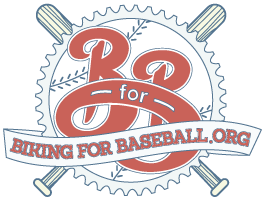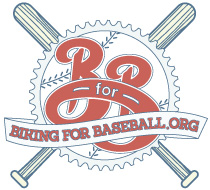Hall of Fame
For the most part, Hall of Fame voters get it right. If a player is worthy of the Hall of Fame, they usually get elected. Sometimes they don’t. The same could be said for anything involving objective opinions.* Humans are easily swayed by perception and public opinion. The difficult part of applying these notions to the Baseball Hall of Fame is the ambiguity of requirements or qualifications to be considered for the Hall of Fame. There isn’t a specific statistical level a player must reach to be elected.
*I can think of about 20 examples right now, but most of them involve college athletics. The reason we were so fortunate to watch the Game of the Century Part II in the BCS Championship game was because Alabama and LSU appeared stronger than other one-loss teams like OSU and Stanford. The subjective voters based their opinions on how the teams were perceived (Thanks to ESPN’s non-stop cheerleading for the SEC).
But voters tend to see some specific statistical levels as “sacred.” Of the 28 players with 3,000 hits, only 4 of them aren’t in the Hall of Fame. Two of them – Derek Jeter and Craig Biggio – aren’t eligible yet, and the other two are Pete Rose and Rafael Palmeiro, who have ominous clouds hanging over their baseball careers (gambling and steroids). Four of the 24 pitchers with 300 wins aren’t in the Hall of Fame because they aren’t eligible yet – Greg Maddux, Tom Glavine, Randy Johnson, and the curious case of Roger Clemens.
Each Hall of Fame voting cycle, members of the Baseball Writers Association of America name no more than 10 eligible players they consider worthy of Hall of Fame honors. To be enshrined, a player must be named on at least 75% of voters’ ballots. Players are removed from the ballot if they are named on fewer than 5% of ballots or have been on the ballot 15 times without election.
I’ve always wondered why it can take 15 years of being on the ballot for a player to get elected. Some very great and outstanding players didn’t meet the mystical 3,000 hits or 300 wins, but that doesn’t mean it should take all 15 years of eligibility to vote them in. Most recently, Jim Rice was elected in his 15th and final year of eligibility in 2009. Why did voters take so long to elect him? Did voters eventually change their minds on his qualifications? I understand that some Hall of Famers aren’t “first ballot Hall of Famers,” the ones who everyone knows deserves to be in immediately after they become eligible. Cal Ripken and Tony Gwynn were clear to be elected in their first chance in 2007. They both received over 97% of the vote. Last season, Bert Blyleven was elected in his 14th year of eligibility. Circle me confused that it took so long.
Why wasn’t he elected sooner? Simple. THE VOTERS ARE STUPID! I’m not really serious when I say that; there are some very intelligent baseball writers who are much smarter than I am. But in the years prior to Blyleven’s election, there were some pretty questionable players who received votes that could have otherwise gone to more worthy players. In 2010, David Segui and his 7.9 career WAR received one vote. That same year, the great Eric Karros somehow tricked two voters to list his name on the ballot. 2008 was even worse; some writers thought Travis Fryman, Rod Beck, Robb Nen, and Shawon Dunston were Hall of Fame worthy. All of these players were very good major league players with many All-Star games between them, but their names on Hall of Fame ballots just delayed more deserving players from getting elected.
Luckily for everyone involved, the subjective opinions of the Baseball Writers Association of America elected a very deserving player this year. Reds great Barry Larkin was elected in his 3rd year of eligibility. Congrats to him! Now its time to argue about which player who has been eligible since last century will be elected next year.


